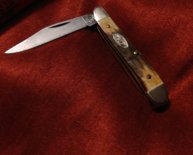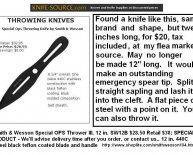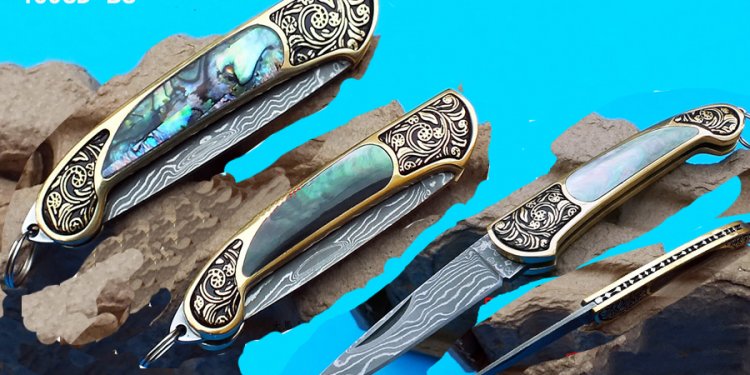
Case Damascus Knives
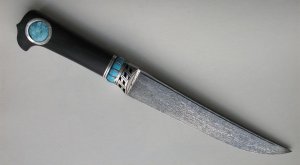 Brandon asks:
Brandon asks:
Can you help me understand all of these Damascus knives I keep seeing? They look gorgeous, but are they just for looks? Would one of these make for a good all-around knife?
Well, that’s a complicated question. First, let’s do a little freshening up on what exactly “Damascus steel” is. Damascus, Wootz, and patternweld are all names given to different types of steels and blades. Basically, the idea is that two or more steel alloys are forged/cast together through various methods to give the wavy artistic pattern that comes from such a layering process. Unfortunately, the technique for making both Damascus and Wootz steel has been lost to the centuries. Anyone claiming to be making authentic Wootz/Damascus these days is delusional. Or lying . . .
Traditional dagger cut from wootz ingot
99.9999% of the layered and forged steel these days is either san-mai or pattern welded (mokume and mosaic are a different thing all together.) San-mai steel is very common in Japanese knives, and it’s literally just a sandwich of 3 sheets of steel. Two outer stainless steels and a harder stainless or carbon steel core make up the cross section of a San-mai blade. No folding is done on a San-mai blade because the goal is to have a hard, protected edge that’s fused to the stainless steel but not mixed with it.
The other type of pattern-welded steel is the so called “Damascus steel”. Originally used in middle eastern sword making, the method has been lost since about the 16th century. The art form has resurfaced, though, and in 1973 bladesmith William F. Moran unveiled his “Damascus knives” at the Knifemakers’ Guild Show. Ever since then modern pattern-welded steel blades have been called “Damascus knives”.
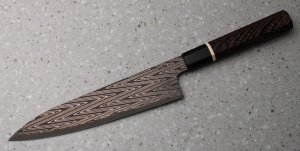 You asked what they are used for. Well…the process of choosing steel for a Damascus blade is important. Many makers choose 2-5 alloys that play nicely together and make for a beautiful pattern. Once the knife is forged or ground to shape, the waves of steel alloy will meet at the edge and you can change the cutting performance of the blade by tweaking the alloy and its heat treat process.
You asked what they are used for. Well…the process of choosing steel for a Damascus blade is important. Many makers choose 2-5 alloys that play nicely together and make for a beautiful pattern. Once the knife is forged or ground to shape, the waves of steel alloy will meet at the edge and you can change the cutting performance of the blade by tweaking the alloy and its heat treat process.
210mm gyuto stainless damascus with 19c27 core, wenge handle
For instance Devin Thomas is a master Damascus maker. He forges every billet himself and has the process down to a science. Devin makes all-stainless Damascus, high contrast, double high carbon, and many, many exotic patterns. When he uses AEB-L and 304 together, it’s obvious that some of the stronger qualities of AEB-L will be watered down by the softer 304. But remember — forged together in a blade, differing alloys present at the blade’s edge can make for a micro-serration surface, aiding in sawing or slicing actions.


